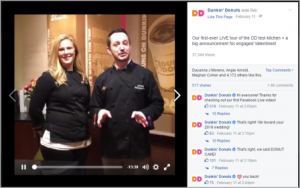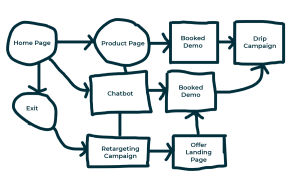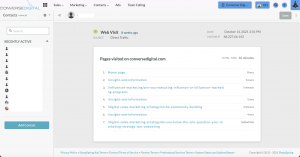For many of us, our shopping habits have been forced online. The stay-at-home orders, radical shifts in demand, undersupplied distribution channels, and difficulties with supply chains have disrupted our usual behaviors and required us to shop in new ways, and away from brick-and-mortar locations.
Even before the dramatic changes from COVID-19, online shopping was overtaking a major part of retail. With the introduction of a global pandemic, home delivery has become a serious competitive advantage, and brands all over the world are searching for ways to enhance this game-changing strategy that will most likely continue – perhaps even flourish – long after this crisis is resolved.
While many marketers may see home delivery as purely operational, primarily for a company’s logistics and supply-chain teams, there are ways that advertising technology can help and contribute to a more ideal user experience for the end-customer.
Inventory Data & Integrating Business Intelligence
The most powerful weapon performance marketers have is their own data. For eCommerce advertisers, specifically tied to delivery and operation logistics, inventory is a pivotal data point that should be ingested into all aspects of digital programs. The inclusion of inventory data allows for the changes of creatives and bid adjustments to align with the availability of certain products.
This can support the quest for seamless home delivery through the ability to sunset campaigns for certain products that are running low in inventory and will sell organically. As consumers, we all know there is nothing more frustrating than clicking an ad only to realize the product is out of stock, or that delivery will take an additional few weeks to complete.
Marin Software is an open stack platform so we can take full advantage of all your available data sources —including your inventory, CRM, data warehouse, publisher data, and additional third-party signals. Marin’s SmartFeed product automatically activates or pauses your campaigns based on inventory levels. Furthermore, it also automatically compares your optimized feed with actual converted search terms, so that you can see missing words from the title and split test to improve performance.
Ad Creatives
Estimated delivery time is set to become a unique selling point and competitive advantage, particularly as smaller, independent retailers try to compete with Amazon Prime. A simple way to convey your delivery times is within your ad creatives. By structuring your programs with geography in mind, you can control the information within the ad creatives to indicate an estimated delivery time to the user.
Additionally, creatives should include delivery cost and/or any import duties a consumer may need to pay, in order to keep it entirely transparent with potential customers (this also helps with brand loyalty in the long run). If you can, include inventory too!
With Marin’s Dynamic Campaigns, you can automatically build keywords and creatives from a product feed and campaign template, so that all the pertinent information we just covered is seamlessly populated.
Optimization
As many advertisers shift their attention from acquisition to retention, securing any revenues they have, the user experience is becoming an increasingly important element for purchase consideration. For many businesses, it’s possible that certain products or geographies can’t render as competitive a delivery service. It’s important to use this logic in your optimization and budget allocation strategies across your digital activity.
In the areas you are more competitive, be aggressive with your bids and budget allocation–you’re a champion in this sphere. This can be done easily through applying modifier logic within your AdTech tool, or leveraging a partner like Marin Software, whose platform has built-in forecasting and budget allocation tools to do the work for you.
Communication
Once an order has been made, the fulfillment experience begins. As customers, we all like to know when our purchase will arrive, thus communicating fulfillment progress is pivotal. The integration of order fulfillment and email marketing technology is an important component in this process.
Offering services such as free tracking and text updates is a great way to keep customers up-to-date. As we focus on retention and customer experience, these regular updates demonstrate that your operation is a business that cares about more than a simple transaction.
One, perhaps extreme, example comes from the mainstream pizza delivery brands like Dominos, which have an order tracking app to keep customers informed of each stage of their pizza’s journey to delivery. Updating regularly through order-received, including the preparation, cooking quality control and out for delivery, the platform makes sure customers stay up-to-date on exactly when their meal will arrive. This, of course, is a level of detail that not all brands will need, or have the resources for, however it shows what can be achieved.
Conclusion
To summarize, ad tech can support your quest to champion online delivery by automating the ad creatives to dynamically update per the user’s specific criteria. Within your creatives, your customer should clearly be able to understand the delivery time, cost and terms straight off the bat. Furthermore, you should leverage first-party inventory and shipping data, combined with audience data, to give you the biggest advantage over your competitors.
Should you want to have a conversation on how Marin Software can help you champion your online delivery strategy, please don’t hesitate to contact a member of our account management team by scheduling a demo today!
Business & Finance Articles on Business 2 Community
(53)




